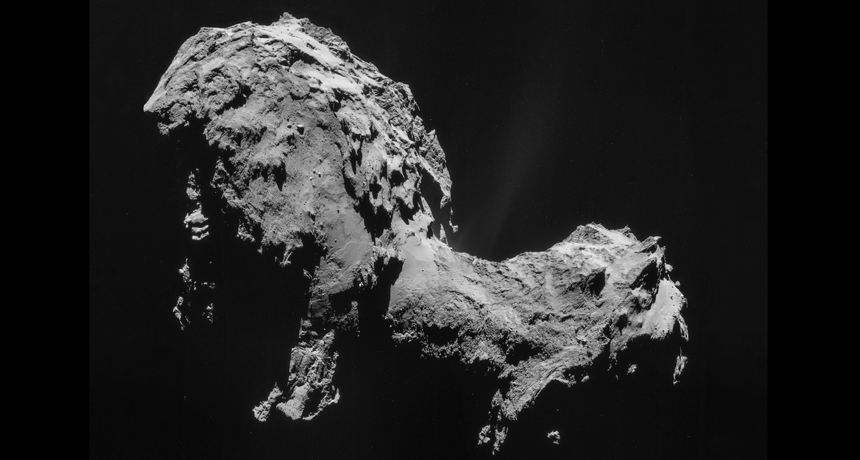(for more about Power Words, click here)
asteroid A rocky object in orbit around the sun. Most orbit in a region that falls between the orbits of Mars and Jupiter. Astronomers refer to this region as the asteroid belt.
atmosphere The envelope of gases surrounding Earth or another planet.
chemical A substance formed from two or more atoms that unite (become bonded together) in a fixed proportion and structure. For example, water is a chemical made of two hydrogen atoms bonded to one oxygen atom. Its chemical symbol is H2O. Chemical can also be an adjective that describes properties of materials that are the result of various reactions between different compounds.
comet A celestial object consisting of a nucleus of ice and dust. When a comet passes near the sun, gas and dust vaporize off the comet’s surface, creating its trailing “tail.”
Kuiper belt An area of the solar system beyond the orbit of Neptune. It is a vast area containing leftovers from the formation of the solar system that continue to orbit the sun. Many objects in the Kuiper belt are made of ice, rock, frozen methane and ammonia.
Neptune The furthest planet from the sun in our solar system. It is the fourth largest planet in the solar system.
Oort cloud A swarm of small rocky and icy bodies far beyond the orbit of Pluto, up to 1.5 light-years from the sun. The cloud is a source of some comets.
orbit The curved path of a celestial object or spacecraft around a star, planet or moon. One complete circuit around a celestial body.
solar system The eight major planets and their moons in orbit around the sun, together with smaller bodies in the form of dwarf planets, asteroids, meteoroids and comets.
sun The star at the center of Earth’s solar system. It’s an average size star about 26,000 light-years from the center of the Milky Way galaxy. Or a sunlike star.

